Birth of
Emilio Pucci
Emilio Pucci is born in Naples on 20 November, 1914. His parents, Orazio Pucci and the Neapolitan countess, Augusta Pavoncelli, are members of two of the oldest aristocratic families.
1914
The Olympics
At the age of 17, Emilio Pucci travels to Lake Placid, New York to ski with the Italian national team. In 1936, Pucci competes in the Berlin Winter Olympics.
1932
College
Student
In 1936, with Fascism spreading across Europe, Emilio Pucci’s family faces financial difficulties. Nonetheless, given his creativity and intelligence, Emilio is awarded a scholarship to Reed College in Oregon, from which he graduates with a Masters in Social Science in 1937.
1936
Lieutenant
Pucci
In 1938, during World War II, Emilio serves as a Pilot Lieutenant in the Italian Air Force. This experience leads him to develop a bird's eye point of view which comes to influence his prints and designs.
1938
A Revolutionary
Ski Suit
In 1947, Pucci’s fashion career begins unexpectedly when he designs vibrant ski uniforms for himself and his girlfriend in Zermatt, Switzerland. Ready-to-wear ski gear does not exist at the time, which makes the outfits all the more desirable. Toni Frissell, an American photographer, captures the fashionable couple - the photographs end up on the desk of Diana Vreeland, legendary fashion editor at Harper’s Bazaar. Almost overnight, Pucci becomes a designer, no longer just a fashionable man.
1947
Capri
In 1950, Emilio fully enters the world of fashion – an unconventional career choice for a man expected to lead the aristocracy. He opens his boutique in front of La Canzone del Mare – Capri’s famous beach club – and establishes his workshop inside his family’s Palazzo in Florence.
1950
The Birth of Italian Fashion
In February 1951, Giovanni Battista Giorgini holds the first Italian fashion show in Florence: selected designers present their work to international distributors, press and media. Emilio Pucci presents a collection including sportswear, beach clothing and eveningwear. Not only does this event mark the awakening of international consciousness for Italian fashion, but it also establishes Pucci as a pioneer within Italian fashion.
1951
The Neiman
Marcus Award
In 1954, Emilio receives the Neiman Marcus Award for Distinguished Service in the Field of Fashion for his jersey silk that liberates women’s bodies. This marks the beginning of his prominence in the United States.
1954
Of Country
& Culture
Emilio Pucci draws inspiration from Italy and its surrounding culture. Mosaics (“La Siciliana” collection 1955), elements from the Palio of Siena (“Palio” collection 1957), Botticelli paintings (“Botticelli” collection 1959), and even Brunelleschi artworks (“La Cupola” collection 1964) inspire his collections.
1955
Love Story
In 1959, Pucci marries his wife, Cristina Nannini di Casabianca.
1959
Emilioform
In Spring 1960, Emilio engineers his first signature fabric, “Emilioform”, composed of shantung silk and nylon. This new material is used to make skiing outfits that hug the body like a second skin – providing skiers with better aerodynamics.
1960
Laudomia
On 16 September, 1961, Laudomia Pucci is born. “To grow up with my father having models around the house, who were actually photographed on the roof next to my playroom, in incredible clothes and hairdos, was totally normal! To know that we had fashion shows in the house and that I could hear clapping from two floors lower was normal, as it was also normal that he would show me his sketches and his drawings. We shared his contagious enthusiasm for his job!” Laudomia Pucci
1961
The Pucci
Lifestyle
In 1961, Emilio Pucci produces his first collection of porcelain tableware for Rosenthal. This marks the first time that Emilio broadens his reach beyond fashion. Pucci becomes a lifestyle – starting a tradition of collaborations.
1961
Wordly
Inspirations
Emilio Pucci’s many travels around the world inspire his work. Sarong skirts and pyjama trousers are designed for his “Bali” collection (1962). He also travels to Africa and South America – transforming what he sees into beautiful prints and colorful motifs.
1962
Marilyn
Monroe
In 1962, George Barris takes the iconic picture of Marilyn Monroe wearing the Pucci “Specchi” shirt at the actress’s house in Brentwood. Jackie Kennedy is also seen wearing Pucci. Two distinct, yet equally iconic, American women testify their love for the Pucci’s prints – paving the way to his success in the United States.
1962
On Politics
From 1963 to 1972, Emilio serves two terms in Parliament, acting as an elected representative of the Italian Liberal Party for the Florentine constituency.
1963
Vivara
Emilio Pucci’s mythical Vivara print, inspired by an island of the Mediterranean Sea, becomes a protagonist of the brand when the Marchese releases the eponymous collection in 1966. Soon after, the Vivara inspires the legendary fragrance. More than a print, Vivara is emblematic of Pucci’s vision and so, is logically extended to lifestyle. The Vivara is applied in a deconstructed way on ceramic components (1967), on carpets (1972) and even on a boat sail (1973).
1965
Art for Home
Extending the Pucci universe. Emilio Pucci designs twelve rugs for Dandolo y Primi in Buenos Aires, Argentina. The rugs are massive versions of his 90x90 prints, scaled to perfect dimensions. They are first exhibited at the city’s Museo Nacional de Arte Decorativo and are now part of Pucci’s bespoke home collection.
1969
To the Moon
In 1971, David Scott, an American engineer, invites Emilio Pucci to design the logo for NASA’s Apollo 15. The logo, depicting three abstract bird-like flying forms, is his interpretation of the imagined transportation between universes. This collaboration is one of Pucci’s proudest accomplishments.
1971
Ride in Pucci
Pucci collaborates with Ford-owned Lincoln in 1979 to imagine an automobile that embodies the luxury of Italian fashion. Pucci, Givenchy, Bill Blass, and Cartier are selected to each design a Lincoln Continental Mark IV as part of this collaboration. Each car reflects the signature design of the respective fashion house.
1979
Puccimania
In the late 1980s and early 1990s, “Puccimania” is absolutely exploding. The economic upswing following a recession in the early 1980s brings Pucci styles back into vogue. Pucci gains a huge presence in the market and international press; Madonna, Paloma Picasso, Hamish Bowels, Linda Evangelista, and Carlyne Cerf de Dudzeele are all photographed wearing Pucci clothing, while Lady Miss Kier wore vintage Pucci while performing with the band Dee-Lite. In September 1990, Isabella Rossellini poses as Sophia Loren in front of a Vivara backdrop for the cover of Vogue Italia. Puccimania at its height.
1987
CFDA
In 1991, Laudomia Pucci travels to New York City to accept the Council of Fashion Designers of America (CFDA) award on behalf of her father, the most prestigious award for designers in the United States. Harper’s Bazaar notes that Pucci’s “60s designs are enjoying a 90s renaissance.”
1991
November 29th
On 29 November 1992, Emilio Pucci passes away. His daughter Laudomia, who has been involved in the business since the 1980s, formally takes over the Pucci brand.
1992
Milan Fashion
Week
On 10 October, 1998, Pucci participates in its first Milan Fashion Week show.
1998
An Alliance
In 2000, LVMH partners with the Pucci family and acquires 67% of the brand. Laudomia becomes Image Director and Deputy Chairman. The partnership leads to a global expansion of boutiques in Portofino, Milan, St. Moritz and Palm Beach. It also brings creative talents to the brand, starting with Christian Lacroix in 2002, to be succeeded by Matthew Williamson, Peter Dundas and Massimo Giorgetti.
2000
Setting Sail
In 2003, Pucci collaborates with Wally Yachts to design an 18-meter Vivaraprinted sail as an advertisement for a relaunch of the brand’s signature fragrance. This collaboration is not for business; it is for fun. Laudomia Pucci, on the floor in Portofino, hand-draws Emilio’s signatures on the sail. The brand’s most famous print sets sail into the shimmering waves – one of Emilio’s earliest inspirations.
2003
Collaboration
Fever
In the spirit of its founder, Pucci continues to tap into a variety of nonfashion projects. In 2004, Pucci collaborates with milliner Philip Tracey. The collaboration is followed by the wrapping of the Florence baptistery with a giant-sized archival print, furniture projects with Cappellini and Kartell, artistic mosaics with Bisazza, and a collaboration with Illy Art Collection.
2004
Happy 60th
Anniversary
In 2007, Pucci celebrates its 60th anniversary, from Florence, to Tokyo and Miami.
2007
A Look Inside…
In 2011, LVMH launches “Les Journées Particulières”, two special days in which the Maisons open to the public, giving him a chance to discover the diversity of the métiers and savoir-faire. Pucci presents Villa di Granaiolo, Three others editions will take place in 2013, 2016 and 2018, but it is only in october 2018 that Palazzo Pucci will open its doors to the public as the Heritage Hub.
2011
Monumental
Pucci
In 2014, Emilio Pucci celebrates Florentine Fashion Heritage with the art installation “Monumental Pucci", wrapping the Battistero di San Giovanni in unique printed panels. The event is part of the celebration of the 60th anniversary of the Centro di Firenze per la Moda Italiana, which takes place during Pitti Immagine Uomo.
2014
Heritage Hub
In 2018, the 13th-century Palazzo Pucci is unveiled as the company’s Heritage Hub, dedicated to address the brand’s history and to create an archive for the future. The Hub carries out Pucci’s legacy of collaborations, welcoming groups of students to work on creative projects.
2018
↑ Back to the top ↑
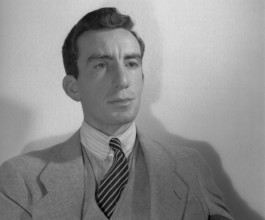
Birth of
Emilio Pucci – 1914
Emilio Pucci is born in Naples on 20 November, 1914. His parents, Orazio Pucci and the Neapolitan countess, Augusta Pavoncelli, are members of two of the oldest aristocratic families.
The Olympics – 1936
At the age of 17, Emilio Pucci travels to Lake Placid, New York to ski with the Italian national team. In 1936, Pucci competes in the Berlin Winter Olympics.
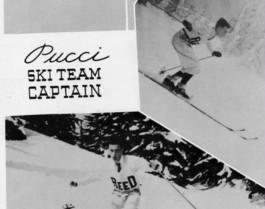
College
Student – 1936
In 1936, with Fascism spreading across Europe, Emilio Pucci’s family faces financial difficulties. Nonetheless, given his creativity and intelligence, Emilio is awarded a scholarship to Reed College in Oregon, from which he graduates with a Masters in Social Science in 1937.
Lieutenant
Pucci – 1938
In 1938, during World War II, Emilio serves as a Pilot Lieutenant in the Italian Air Force. This experience leads him to develop a bird's eye point of view which comes to influence his prints and designs.

A Revolutionary
Ski Suit – 1947
In 1947, Pucci’s fashion career begins unexpectedly when he designs vibrant ski uniforms for himself and his girlfriend in Zermatt, Switzerland. Ready-to-wear ski gear does not exist at the time, which makes the outfits all the more desirable. Toni Frissell, an American photographer, captures the fashionable couple - the photographs end up on the desk of Diana Vreeland, legendary fashion editor at Harper’s Bazaar. Almost overnight, Pucci becomes a designer, no longer just a fashionable man.
Capri – 1950
In 1950, Emilio fully enters the world of fashion – an unconventional career choice for a man expected to lead the aristocracy. He opens his boutique in front of La Canzone del Mare – Capri’s famous beach club – and establishes his workshop inside his family’s Palazzo in Florence.
The Birth of Italian
Fashion – 1951
In February 1951, Giovanni Battista Giorgini holds the first Italian fashion show in Florence: selected designers present their work to international distributors, press and media. Emilio Pucci presents a collection including sportswear, beach clothing and eveningwear. Not only does this event mark the awakening of international consciousness for Italian fashion, but it also establishes Pucci as a pioneer within Italian fashion.
The Neiman Marcus
Award - 1954
In 1954, Emilio receives the Neiman Marcus Award for Distinguished Service in the Field of Fashion for his jersey silk that liberates women’s bodies. This marks the beginning of his prominence in the United States.
Of Country
& Culture – 1955
Emilio Pucci draws inspiration from Italy and its surrounding culture. Mosaics (“La Siciliana” collection 1955), elements from the Palio of Siena (“Palio” collection 1957), Botticelli paintings (“Botticelli” collection 1959), and even Brunelleschi artworks (“La Cupola” collection 1964) inspire his collections.
Love Story – 1959
In 1959, Pucci marries his wife, Cristina Nannini di Casabianca.
Emilioform – 1960
In Spring 1960, Emilio engineers his first signature fabric, “Emilioform”, composed of shantung silk and nylon. This new material is used to make skiing outfits that hug the body like a second skin – providing skiers with better aerodynamics.
Laudomia – 1961
On 16 September, 1961, Laudomia Pucci is born. “To grow up with my father having models around the house, who were actually photographed on the roof next to my playroom, in incredible clothes and hairdos, was totally normal! To know that we had fashion shows in the house and that I could hear clapping from two floors lower was normal, as it was also normal that he would show me his sketches and his drawings. We shared his contagious enthusiasm for his job!” Laudomia Pucci
The Pucci
Lifestyle – 1961
In 1961, Emilio Pucci produces his first collection of porcelain tableware for Rosenthal. This marks the first time that Emilio broadens his reach beyond fashion. Pucci becomes a lifestyle – starting a tradition of collaborations.
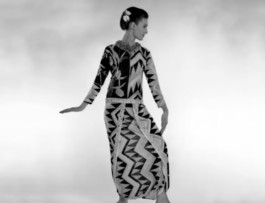
Wordly
Inspirations – 1962
Emilio Pucci’s many travels around the world inspire his work. Sarong skirts and pyjama trousers are designed for his “Bali” collection (1962). He also travels to Africa and South America – transforming what he sees into beautiful prints and colorful motifs.
Marilyn
Monroe – 1962
In 1962, George Barris takes the iconic picture of Marilyn Monroe wearing the Pucci “Specchi” shirt at the actress’s house in Brentwood. Jackie Kennedy is also seen wearing Pucci. Two distinct, yet equally iconic, American women testify their love for the Pucci’s prints – paving the way to his success in the United States.

On Politics – 1963
From 1963 to 1972, Emilio serves two terms in Parliament, acting as an elected representative of the Italian Liberal Party for the Florentine constituency.
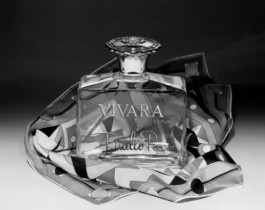
Vivara – 1963
Emilio Pucci’s mythical Vivara print, inspired by an island of the Mediterranean Sea, becomes a protagonist of the brand when the Marchese releases the eponymous collection in 1966. Soon after, the Vivara inspires the legendary fragrance. More than a print, Vivara is emblematic of Pucci’s vision and so, is logically extended to lifestyle. The Vivara is applied in a deconstructed way on ceramic components (1967), on carpets (1972) and even on a boat sail (1973).
Art for Home – 1969
Extending the Pucci universe. Emilio Pucci designs twelve rugs for Dandolo y Primi in Buenos Aires, Argentina. The rugs are massive versions of his 90x90 prints, scaled to perfect dimensions. They are first exhibited at the city’s Museo Nacional de Arte Decorativo and are now part of Pucci’s bespoke home collection.
To the Moon – 1971
In 1971, David Scott, an American engineer, invites Emilio Pucci to design the logo for NASA’s Apollo 15. The logo, depicting three abstract bird-like flying forms, is his interpretation of the imagined transportation between universes. This collaboration is one of Pucci’s proudest accomplishments.
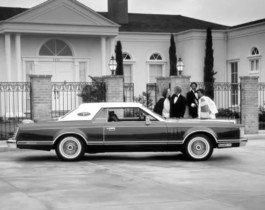
Ride in Pucci – 1971
Pucci collaborates with Ford-owned Lincoln in 1979 to imagine an automobile that embodies the luxury of Italian fashion. Pucci, Givenchy, Bill Blass, and Cartier are selected to each design a Lincoln Continental Mark IV as part of this collaboration. Each car reflects the signature design of the respective fashion house.
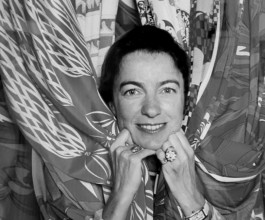
Puccimania – 1987
In the late 1980s and early 1990s, “Puccimania” is absolutely exploding. The economic upswing following a recession in the early 1980s brings Pucci styles back into vogue. Pucci gains a huge presence in the market and international press; Madonna, Paloma Picasso, Hamish Bowels, Linda Evangelista, and Carlyne Cerf de Dudzeele are all photographed wearing Pucci clothing, while Lady Miss Kier wore vintage Pucci while performing with the band Dee-Lite. In September 1990, Isabella Rossellini poses as Sophia Loren in front of a Vivara backdrop for the cover of Vogue Italia. Puccimania at its height.
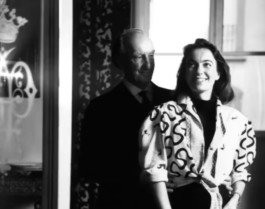
CFDA – 1991
In 1991, Laudomia Pucci travels to New York City to accept the Council of Fashion Designers of America (CFDA) award on behalf of her father, the most prestigious award for designers in the United States. Harper’s Bazaar notes that Pucci’s “60s designs are enjoying a 90s renaissance.”

November
29th – 1992
On 29 November 1992, Emilio Pucci passes away. His daughter Laudomia, who has been involved in the business since the 1980s, formally takes over the Pucci brand.
Milan Fashion
Week – 1998
On 10 October, 1998, Pucci participates in its first Milan Fashion Week show.
An Alliance – 2000
In 2000, LVMH partners with the Pucci family and acquires 67% of the brand. Laudomia becomes Image Director and Deputy Chairman. The partnership leads to a global expansion of boutiques in Portofino, Milan, St. Moritz and Palm Beach. It also brings creative talents to the brand, starting with Christian Lacroix in 2002, to be succeeded by Matthew Williamson, Peter Dundas and Massimo Giorgetti.

Setting Sail – 2003
In 2003, Pucci collaborates with Wally Yachts to design an 18-meter Vivaraprinted sail as an advertisement for a relaunch of the brand’s signature fragrance. This collaboration is not for business; it is for fun. Laudomia Pucci, on the floor in Portofino, hand-draws Emilio’s signatures on the sail. The brand’s most famous print sets sail into the shimmering waves – one of Emilio’s earliest inspirations.
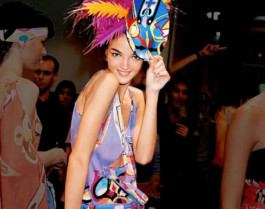
Collaboration
Fever – 2004
In the spirit of its founder, Pucci continues to tap into a variety of nonfashion projects. In 2004, Pucci collaborates with milliner Philip Tracey. The collaboration is followed by the wrapping of the Florence baptistery with a giant-sized archival print, furniture projects with Cappellini and Kartell, artistic mosaics with Bisazza, and a collaboration with Illy Art Collection.
Happy 60th
Anniversary – 2007
In 2007, Pucci celebrates its 60th anniversary, from Florence, to Tokyo and Miami.
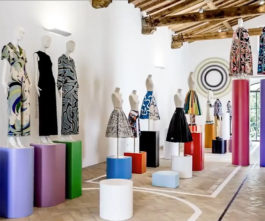
A Look Inside… 2011
In 2011, LVMH launches “Les Journées Particulières”, two special days in which the Maisons open to the public, giving him a chance to discover the diversity of the métiers and savoir-faire. Pucci presents Villa di Granaiolo, Three others editions will take place in 2013, 2016 and 2018, but it is only in october 2018 that Palazzo Pucci will open its doors to the public as the Heritage Hub.
Monumental
Pucci – 2014
In 2014, Emilio Pucci celebrates Florentine Fashion Heritage with the art installation “Monumental Pucci", wrapping the Battistero di San Giovanni in unique printed panels. The event is part of the celebration of the 60th anniversary of the Centro di Firenze per la Moda Italiana, which takes place during Pitti Immagine Uomo.
Heritage Hub – 2018
In 2018, the 13th-century Palazzo Pucci is unveiled as the company’s Heritage Hub, dedicated to address the brand’s history and to create an archive for the future. The Hub carries out Pucci’s legacy of collaborations, welcoming groups of students to work on creative projects.
↑ Back to the top ↑